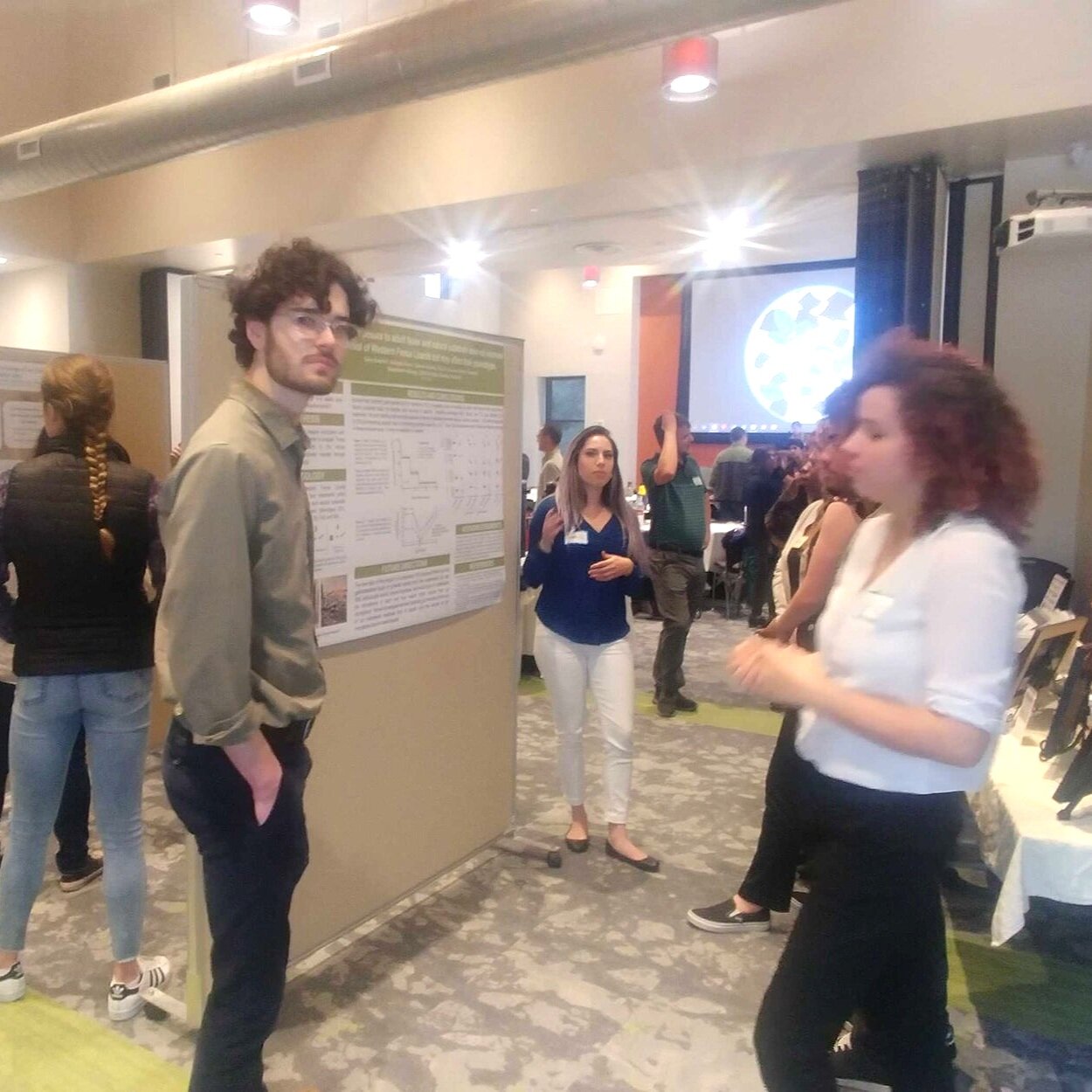TREE lab members (left to right) Nicholas Putnam, Daisy Underhill, Vanessa Valencia, Rory Telemeco, Dalton Leibold, and Cha Thao at HerpFest
The TREE lab met local researchers and presented some of our work at the 2020 California HerpFest, a local meeting of California scientists studying reptiles and amphibians. It was a whirlwind of a day. We met at Fresno State at 5am, drove the 4 hours to the meeting at Westmont College in Santa Barbara, spent the day talking science before moving to a social in the evening where we talked more science, and finally drove back to Fresno, arriving around Midnight. We were all exhausted by the end, but I think we all learned a lot, met fantastic people, and got to show off some of what we’ve been up to for the last couple of years.
Rory giving the plenary presentation at California HerpFest 2020
We had to leave so early, because Rory gave the first talk of the conference at 9:30. He used this plenary presentation to generally introduce the TREE lab, and describe our new method for measuring maximum metabolic rates in lizards.
Nick (left), Vanessa (middle), and Daisy (right and a little blurry) presenting the results of the “poop group” experiment.
Later in the day, Daisy Underhill, Nick Putnam, and Vanessa Valencia gave their first poster presentations, which described the research they’ve been working on for the last couple of years as the “poop group”. It’s been a long road since Daisy, Nick, and Nadya Pirogova first began designing the experiment 2018, so it was exciting to see their results being presented at a conference. Somewhat surprisingly to us, none of their microbe treatments (exposure to feces or natural substrate) affected offspring survival, but we saw a positive effect of the treatments on hatchling body condition at 14 days post-hatching. Nick, Daisy, and Vanessa spent last semester extracting DNA from the guts of lizards at the end of the experiment which are currently being sequenced. So, for their next presentation they should be able to say whether or not the treatments actually affected the gut microbiomes of the lizards. Stay tuned!
Dalton presenting his first talk at a scientific conference!
Finally, Dalton Leibold rounded out the day with the penultimate talk of the meeting (and his first talk at a scientific conference). Dalton described the work that he and Jacob Gastellum performed with the “HMTL group” testing the combined effects of metabolic demand and oxygen environment on thermal preferences in fence lizards. The talk was well received. He did a great job, especially for his first try at this! Dalton is currently working on drafting a manuscript describing this research, which will be chapter 1 of his thesis. So, hopefully it will be in print in the not-to-distant future!
In addition to giving talks, we heard awesome talks from a bunch of cool California researchers from USGS, Westmont College, CSU Northridge, La Sierra University, Cal Poly SLO, and others. We also got to have some great conversations. Among other things, Cha got a lot of insight from folks about how best to start up our leopard lizard research in the coming months. More on that soon. Thanks for reading!




